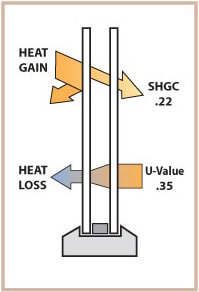Energy Guide
Your Guide to Understanding Why New Windows Are So Energy Efficient
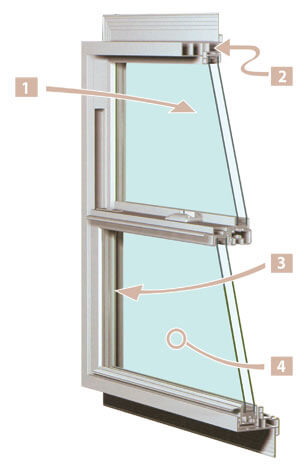
The Most Important step in controlling heat comes from your glass choices. While a dual unit is good, when you add a Low Emissivity Coating, called Low-E, you make a major improvement in stopping the transfer of heat into your home in the summer, and out in the winter.
The Window Industry uses two key indicators:
U-ValueMeasuring the heat flow from a warmer to a cooler side of a window is the U-Value. Lower is better!
Solar RadiationThe direct and diffused heat from the sun that transfers into your home is measured by the Solar Heat Gain Coefficient (SHGC) of the window.
The SHGC is the most important factor in keeping your home cooler in the summer!
2. Smart Frame DesignsCompared to your old aluminum windows, new windows are made from energy efficient materials, such as Vinyl, and are engineered for maximum strength and insulation values.
Vinyl requires no maintenance and will maintain its great look even in the toughest weather conditions, especially the daily UV rays that come with our sunny days in San Diego.
3. Spacer TechnologyOver the past 20 years, the design and application of the spacer, which holds the 2 pieces of glass apart in a dual pane unit, has evolved into an important step in stopping the transfer of heat.
4. Using GasNot Unleaded, but Argon!
Depending on the climate, adding a gas to the inside of the dual pane unit will help reduce heat transfer, and improve the U-Value rating of the window.
New Windows are Designed to Stop the Transfer of Heat.
Keep heat out of your home in the summer. Keep heat in your home during the winter.
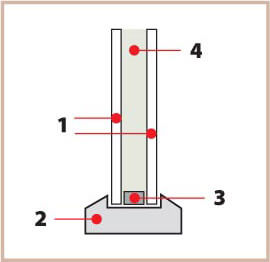
Using Glass to Control Heat
Low-E, or Low Emissivity, coatings are a combination of materials that are applied to one surface of the glass. The mixtures of materials are varied to manage two primary types of energy: radiant heat and solar heat (direct sunlight). Depending on the location of your home, size and location of your windows, window treatments, landscaping and other variables, you may select a Low-E Coating to maximize your window performance.The Better the Window, The Lower the Energy Usage Will Be!
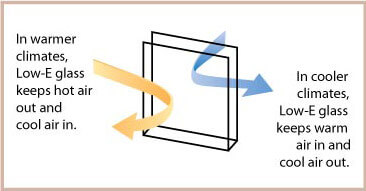
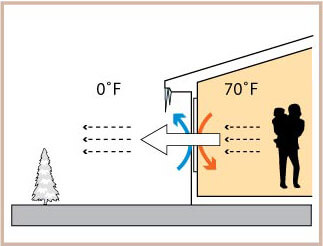
Insulating Value (U-Value)
Measuring the temperature difference from inside to outside the home is done using a U-Value. A lower U-Value means less heat transfers through the window.The greater the ability of the window to resist heat transfer, the lower the U-Value, which leads to lower winter heating usage.
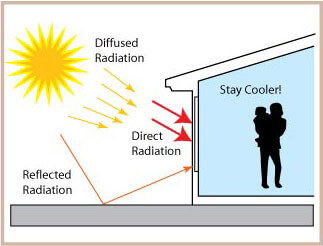
Solar Heat Control (SHGC)
Regardless of outside temperature, heat can be gained through a window by direct and in-direct solar radiation. A Solar Heat Gain Coefficient, or SHGC, is the measure used to determine this heat transfer.
Solar Heat Gain control is the most important factor in determining the AC load of a home.
1. Smart Window Design means the manufacturer has engineered the frame of their window to provide a higher level of protection against energy transfer.
2. Aluminum windows have now been replaced with Vinyl windows, the first key step in developing better windows.
3. Spacer Designs, which holds the two panes of glass together, have advanced in performance and are now providing superior insulation properties. There are now several designs of spacers to maximize the window’s performance.
4. Argon Gas, the most common gas filler used in the assembly of dual units, adds another layer of insulation to your new windows. Gas fillers are primarily used where the homeowner wants to keep heat in the house, such as in cold climates.
Gas fillers are primarily used where the homeowner wants to keep heat in the house, such as in cold climates.

Look for Energy Star rated windows that indicate the product has met the minimum energy ratings set for your climate zone.
The Most Important Step:
Control Energy Transfer by Selecting Dual Pane Glass with a Low-E Coating
Window Frame and Glass Comparison
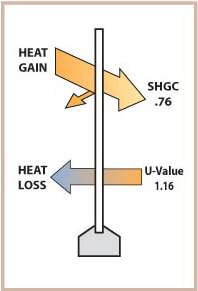
ALUMINUM FRAME
SINGLE PANE
CLEAR GLASS
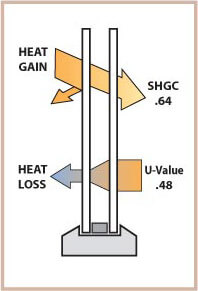
VINYL FRAME
DUAL PANE
CLEAR / CLEAR
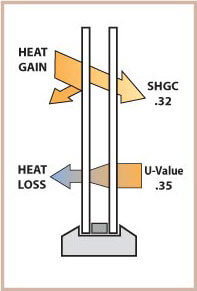
VINYL FRAME
DUAL PANE
STANDARD LOW-E
